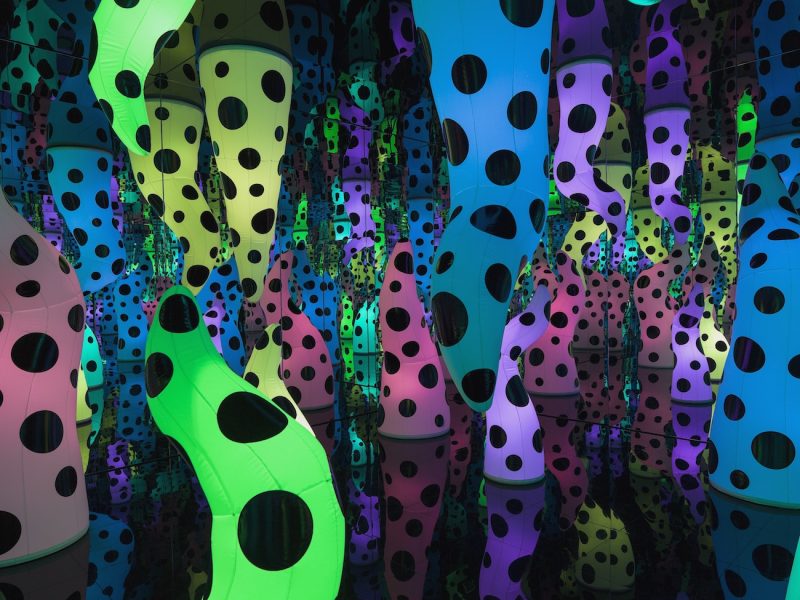
Yayoi Kusama,
View full creditsAn icon of contemporary art, Yayoi Kusama (b. 1929, Matsumoto, Japan) has interwoven ideas of pop art, minimalism, and psychedelia throughout her work in paintings, performances, room-size presentations, outdoor sculptural installations, literary works, films, design, and architectural interventions over her long and influential career. LOVE IS CALLING, which premiered in Japan in 2013, is the most immersive and kaleidoscopic of the artist’s Infinity Mirror Rooms. Representing the culmination of her artistic achievements, it exemplifies the breadth of her visual vocabulary—from her signature polka dots and soft sculptures to brilliant colors, the spoken word, and most importantly, endless reflections and the illusion of space. It is composed of a darkened, mirrored room illuminated by inflatable, tentacle-like forms—covered in the artist’s characteristic polka dots—that extend from the floor and ceiling, gradually changing colors. As visitors walk throughout the installation, a sound recording of Kusama reciting a love poem in Japanese plays continuously. Written by the artist, the poem’s title translates to Residing in a Castle of Shed Tears in English. Exploring enduring themes including life and death, the poem poignantly expresses Kusama’s hope to spread a universal message of love through her art. A two-minute experience, LOVE IS CALLING is accompanied by a focused presentation drawn from the ICA’s collection titled Beyond Infinity: Contemporary Art After Kusama that will offer insight into Kusama’s influences and her important legacy on contemporary art.
Kusama is one of today’s most recognized and celebrated artists. In addition to her widely popular Infinity Mirror Rooms, Kusama creates vibrant paintings, works on paper, and sculpture with abstract imagery. In 1966, the ICA exhibited an Infinity Mirror Room, now titled Endless Love Show, in the ICA exhibition Multiplicity; the museum also owns a 1953 drawing by the artist, titled A Flower (No. 14). LOVE IS CALLING is the largest of Kusama’s existing Infinity Mirror Rooms, and the first one held in the permanent collection of a New England museum.
Yayoi Kusama: LOVE IS CALLING is organized by Eva Respini, Barbara Lee Chief Curator.
LOVE IS CALLING was acquired through the generosity of Barbara Lee/The Barbara Lee Collection of Art by Women, Fotene Demoulas and Tom Coté, Hilary and Geoffrey Grove, Vivien and Alan Hassenfeld, Jodi and Hal Hess, Barbara H. Lloyd, and an anonymous donor.